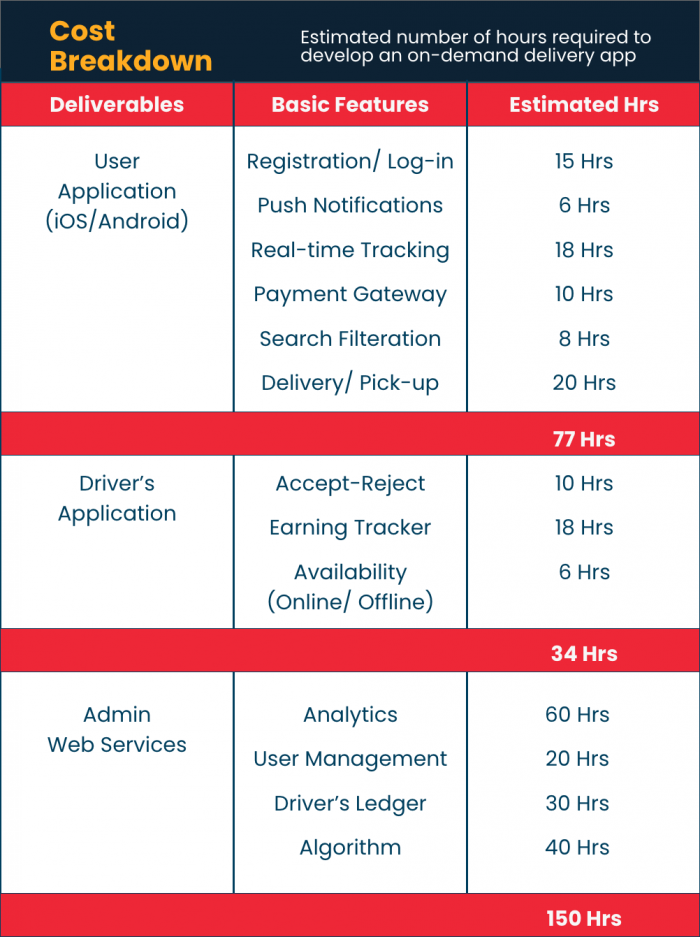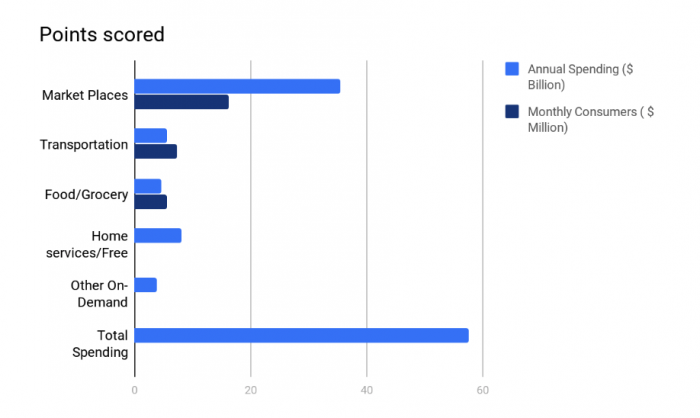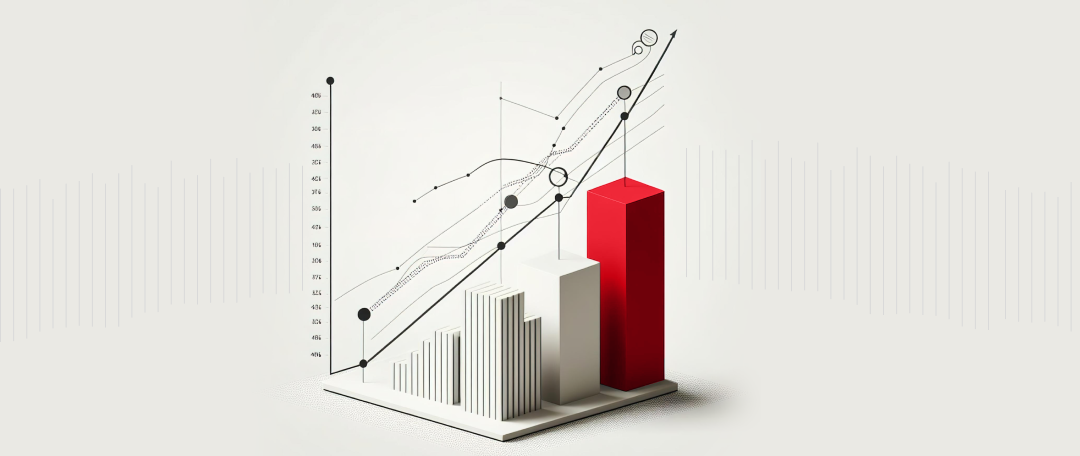If you are thinking of launching an on-demand delivery app, one of the most important questions you have must be how much would it cost? The truth is that there is no “one size fits all” budget when it comes to the app development cost. The cost to develop the app depends on a number of factors, all of which I will cover in this blog. The right amount of investment depends on the business demands, model, USPs, and ultimately, the complexity of the app.
Before we dive into the app development cost metrics, let’s take a moment to fully understand the on-demand delivery space – starting with defining what an on-demand delivery business is, its functions, applications and use cases, etc.
What is on-demand delivery?
Unlike the old times, where you had to step out to have the cuisine of your choice or buy a product, an on-demand delivery app brings your preferred items to your home. This model enables businesses to act as a mediator, connecting buyers with sellers. When a customer wants a product or service, he/she can find a related service provider, order what they need through the app, and pay for it instantly or at the time of the delivery. A small service fee is charged on every order made through the app by the service provider.
The on-demand delivery model was pioneered by Uber; ever since its inception the adoption of Uber-esque business model has been vastly taken up and experimented with across different industries. Uber successfully merged convenience with quality. The value proposition it offered was centered around accessibility, urging other businesses to hop on the on-demand delivery bandwagon. Soon, from food delivery and transportation to entertainment, the on-demand economy had its roots pierced into every sector one could imagine.
Why is on-demand delivery so popular?
As we become more accustomed to search engines spawning results within seconds, instant gratification is inevitable. We expect the same when it comes to products and services.
That’s where on-demand delivery apps come in handy. Everything is just a click away! You get cab or beauty services right at your doorstep within minutes, that too with real-time tracking. Recently, on-demand delivery apps have become an essential part of our lives.
How does an on-demand delivery app work?
The on-demand delivery app works as aggregators of products, services and entertainment options. You can select a service you want from the app, be it taxi, grocery, food or medicine; it serves you exactly what you desire. Once you have ordered the product or service, the provider will get it delivered to your doorstep. Upon receiving the order you either prepay through payment integrations such as Apple Pay, online banking, or cash. Moreover, you can provide instant feedback to the service right from the app.
Each of these functions is deployable as an added feature but comes with a cost. In the next section, I will be explaining the importance and cost of on-demand delivery app features set to help on-demand delivery businesses make informed decisions about the key features complementing their business model.
Key features of an on-demand delivery app
Once you finalize the idea for your delivery business, you are in a better position to set realistic KPIs for the development of the app. Ideally, you should monitor these three KPIs which are correlated to the development cost of the app.
- User acquisition
- User retention
- Transportation and delivery cost
Moreover, from the point of view of businesses, developing an on-demand delivery app solution – which includes the customer app, the delivery agent app and the admin and operations portal – will be extremely fruitful. Improved employee satisfaction, business scalability, independent contractors working part-time and instant feedback from customers are just a few examples of the benefits achievable while others are listed in detail below.
The Customer App provides a wide array of features, including real-time tracking along with status updates, the ability for customers to connect with agents, multiple payment gateways, push notifications, ratings, and reviews, and promo codes. Customers usually deem the following as the most important:
- Mobile-first user experience
- Fast delivery of products or services
- Cheaper prices than traditional service providers or sellers
- Frictionless payments system
- Real-time tracking
The Delivery Agent pp benefits businesses through auto-delivery dispatch, route optimization, and navigation, service details, tracking each agents’ earnings, modifying order statuses, and managing cash flow and receipts.
The Admin and Ops Portal gives a holistic view of the business and allows companies to manage their agents by GPS tracking and performance appraisals via analytics ensuring efficient resource allocation.
Knowing the value addition each feature brings to the app, you will be in a better position to choose the ones that best fit your business model and budget.
Types of on-demand delivery apps
On-demand delivery apps can be categorised under three segments based on vendor – client relations: Customer to Customer (C2C), Business to Customer (B2C) and Business to Business (B2B).
As per the US Census Bureau, the benefits of an on-demand app have already started to reflect in the global spending pattern. The on-demand service and product economy are attracting more than 22.4 million consumers annually and $57.6 billion in spending with food, grocery, healthcare and logistics in a prime position to benefit the most.
Food and Grocery Delivery:
Food and grocery are the most in-demand sectors for on-demand delivery. As food cravings and hunger are human instincts, providing convenience and a wider product mix can help capture major market share and customer loyalty. It is no surprise that the On-demand delivery market is on course to grow at a CAGR of 27.9% and reach $16,605 million by 2023.
The most prominent on-demand apps within this sector are InstaCart, Postmates, UberEats, GrubHub, and DoorDash.
Healthcare:
The ease of on-demand appointments for doctors, lab tests, and prescription orders are gaining traction from on-demand healthcare apps. As we prepare ourselves for the new normal post-COVID-19, one thing is for certain that the surge in demand for telehealth is going to be massive. There are a plethora of business channels you can tap into with digital healthcare.
Transportation and Logistics:
This is the most controversial sector yet but increasingly popular. Contentious due to the difficulties and hardships faced by companies like UberRush and Shyp however quite famous due to the successes of apps like Uber and Careem. It provides an opportunity for incumbent businesses and start-ups to find reliable transportation providers and users through coupons for cheaper and convenient travel.
Having covered all the prerequisites involved in defining the development cost, you can now work towards creating one for yourself. It is time to focus on the real question “The cost of the on-demand delivery app”.
The cost of building an on-demand delivery app
Now down to why you have read this far: how much does it cost? The development cost of an on-demand delivery app depends on multiple factors such as the features, the country of development, team size, deadlines, MVP features, and the chosen platform. To get a better idea, it is important to understand how companies assign a cost to app development. Let’s take a step back, and think from a developer’s perspective.
How do software companies calculate the cost?
Amongst multiple approaches adopted by companies to calculate the cost, the most common one stands to be:
(Fixed hourly cost) * (Hourly effort that goes into the development of the app)
This approach is dependent upon multiple factors such as the country from which the app is being developed, the complexity of the app, features and the number of hours required by the development team. For instance, a company in the USA charges $X per hour, and others in Pakistan charge $Y. A simple app with minimum features requires 340 hours of development, whereas a complex app requires around 1500 hours.

Which takes us to the next point i.e. how do these app development companies define hourly rates? Let’s crack the hidden secrets.
Factors impacting the hourly rate
- Location
The development of the app is more expensive in the USA than in Pakistan depending on the quality and experience of the company. - Platforms
Android or iOS, each platform requires different skills and development costs which can be further affected by the type of app – native app or hybrid app. - Features
Complex apps require a versatile set of features as compared to simpler apps that could be developed with just a few features. For estimating the cost of the app, it is vital to know the exact features you want in your app – whether you want to add location-based services, integrate a payment gateway, incorporate streaming, support multiple languages, allow ads, enable live chat, etc - Integrations
You need to define if the app requires integration with an ERP or CRM. If it does, then it will add to the development cost. - Design
It is the most integral and expensive component of the development. User experience-driven apps definitely standout but they come with a price tag. The visual intricacy leads to more effort, both from the back-end and front-end, hence leading to the app being costly. - Team & experience
The experience of the development team determines the quality of the app. The more experience the team has in developing great apps, the more they usually tend to charge.
Other factors affecting the cost
- Maintenance cost
Make sure you have a maintenance cost agreement post-release so that your on-demand delivery app is future proof against any new updates by the operating systems which could leave your app redundant if not handled properly. - Infrastructure cost
This involves consideration towards the server selections, database selections, or major integrations with ERP or CRM all of these will add up to the cost of the app.
All these factors define the number of hours that go into the development of the app eventually impacting the cost. However, there are ways to bring this cost down.
The most effective ways to cut down cost
- MVP (Minimum Viable Product)
Start with a limited set of features by defining your core competencies and build on them. Apps like Amazon, Uber, and Roadies all started as MVP with a limited set of features and gradually augmented. - SAAS Approach
The SAAS subscription-based model is lucrative for businesses looking for instant deployment. In a SAAS environment, the service providers will host the app for you and run the maintenance and updates against a minimum set fee to avail of the service or product. These models enable businesses to use off-the-shelf white-labeled delivery management solutions that work on a pay as you go framework. These solutions require zero deployment cost of the delivery management app, as their monetization model works on charging a fixed percentage per delivery. Therefore, the cost of an on-demand delivery app is dependent on the monthly order quantum.
Summary
Here are some guidelines to give you that extra nudge to build a successful on-demand delivery app:
- Do your research
- Start local
- Market
- Prioritize customer loyalty
- Incentivize delivery agents
- Be careful what you wish for- stay realistic
If you’ve read so far, we can safely assume you agree that this is the year to launch an on-demand delivery startup. Using that business idea of yours, showcase your entrepreneurial skills, and kick start your on-demand delivery business today!







